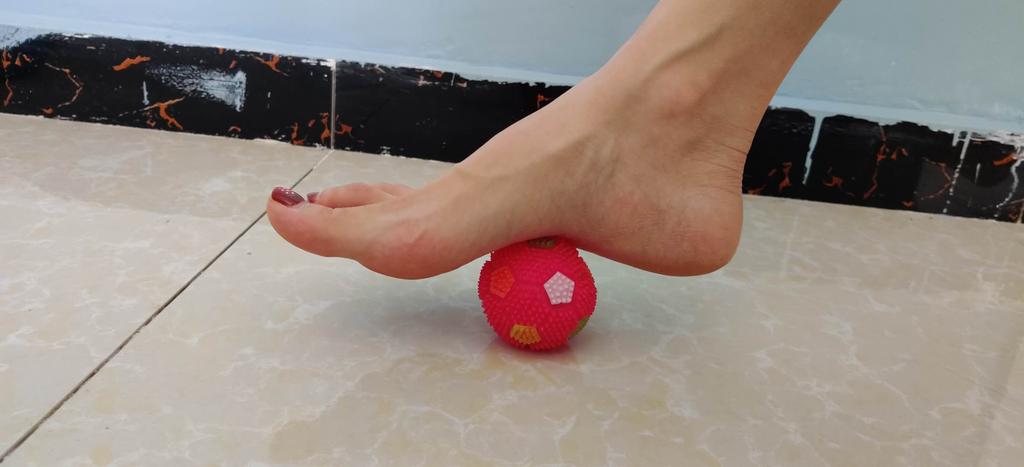Feet hurting after a long walk? Perhaps your feet are a bit special. If you feel pain in the soles of your feet after a long walk, it means they are bearing too much “unbearable weight”. Friends who feel pain in the soles of their feet after a long walk can leave a comment in the comment area.
The root of the problem lies in the arch of the foot.
What’s wrong with the arch of the foot?
The arch of the foot is located at the bottom of the foot, supporting the entire foot like a bent bow. Moreover, it is an elastic “buffer device”. When the body is under load, standing and walking, the ground will cause certain vibrations to the body, and the buffering function of the arch of the foot can reduce these vibrations.
If you experience frequent foot pain (especially in front of the inside ankle joint) after a long walk, the pain eases after rest, or even “turn out” situation, it is probably due to the collapse of the arch of the foot – the collapse of the arch means that the foot has lost adequate support and cushioning. Over time, a collapsed arch (low arch) will turn into “flat foot”.

Simple steps to test if you have flat feet Flat feet can be congenital or acquired.
Most children and adolescents have congenital flat feet, which is caused by abnormal development of foot bones, ligaments, or muscles. Adult flat feet may be a continuation of childhood flat feet, or they may be caused by other reasons later in life.
For example: joint degeneration, trauma, diabetes, rheumatoid arthritis, neuropathic changes, tumors, insufficiency of the tibialis posterior tendon, etc.
How to determine if you have flat feet? You can use the foot print method, which is simple to operate and clear at a glance.

First, barefoot, wet the soles of your feet, then find a piece of newspaper or white paper, step on it with normal force, and observe the shape of the arch on the footprint.
Can flat feet be cured? Flat feet can also be divided into flexible flat feet and rigid flat feet.
Rigid flat feet, whether walking or lifting the foot, the arch is collapsed and low; while flexible flat feet may collapse under pressure when walking, but after the foot is lifted, an arched foot can be seen.
The former is often ineffective through conservative treatment and requires surgery; the latter can try conservative treatment first, which may have some effect.
Treatment for flexible flat feet can be corrected through corrective appliances.
Corrective appliances can provide sufficient support for the inside of the foot, prevent the collapse of the arch, increase the stability of the ankle joint, and prevent the occurrence of foot deformities.
It should be noted that these corrective devices need to be customized and should not be used casually. Otherwise, it will not only fail to correct the arch, but also cause wear and tear on the foot, exacerbating the pain.
In addition to wearing orthotics, you can also restore the arch and improve foot function through some rehabilitation exercises.
Here are some easy exercises:
Tennis Ball Roll Under the Foot

Place a tennis ball flat on a mat, step on it with one foot, press down and roll the ball back and forth. It is recommended to do 30 times per set, and 2 sets per day.
Toe Stretch

Place your toes flat and spread apart on the mat; if unable to do so, use your hands to assist in spreading the toes apart. Lift your heels and kneel forward on the mat with both hands supporting your knees.
Feel the stretch in the toes and the plantar fascia. Hold the position for 30 seconds as one set, and do 2 sets per day.
Toe Strength Training

Step on an elastic band with your toes, and pull the band upwards to create sufficient tension.
Then, slowly relax and stretch out your toes before contracting and curling them, using the strength of your toes to pull the elastic band downwards.
Hold the position for 2 seconds after pulling, then slowly return to the starting position. It is recommended to do 20 repetitions per set, and 2 sets daily.
Towel Grabbing Exercise


Place the sole of your foot flat on the ground and slowly contract the muscles of the foot to shorten the arch (this can be assisted by the action of grabbing a towel), then hold for 2 seconds before slowly returning to the original position.
If you cannot control it well at the beginning, you can use your hand to help shorten the sole of your foot until you can actively contract it yourself.
It is recommended to do 20 repetitions per set, and 2 sets daily.
Ankle Resistance Inversion

Place a resistance band around your ankle, tighten the ankle inward and downward, which contracts the muscles on the inner side of the foot and ankle, raising the arch and inverting the ankle.
Hold for 2 seconds and then slowly return to the original position. It is recommended to do 20 repetitions per set, and 2 sets daily.
Toe Curl Heel Raise


Stand naturally with both feet parallel. Slowly curl your toes upward to the maximum extent, then raise your heel to the maximum extent.
Maintain body stability throughout the process, keep the ankle in a neutral position without deviating. It is recommended to do 20 repetitions per set, and 2 sets daily.
With scientific and regular rehabilitation exercises, most people with flexible flat feet can recover. I hope everyone has confidence and perseverance.

0